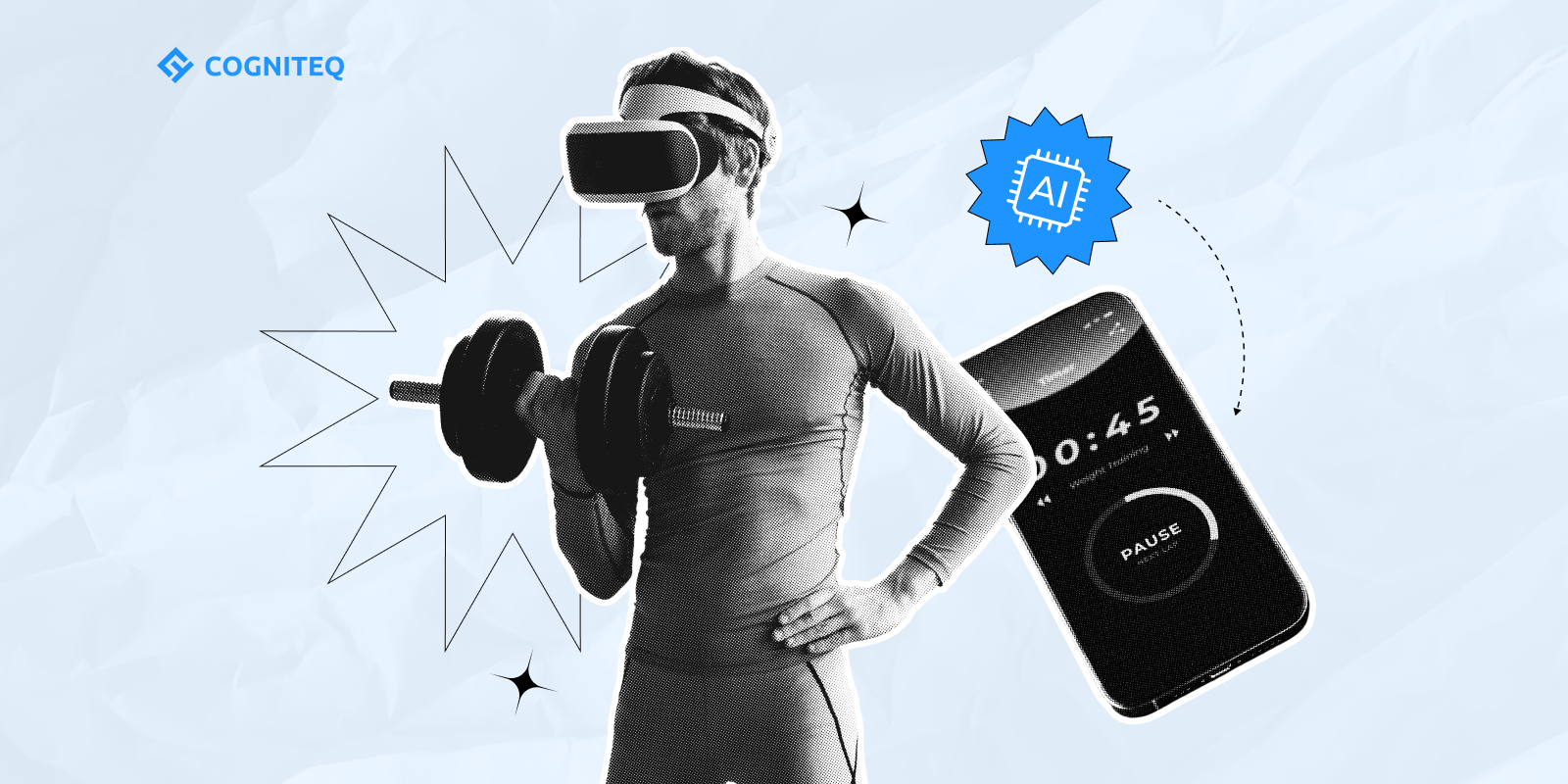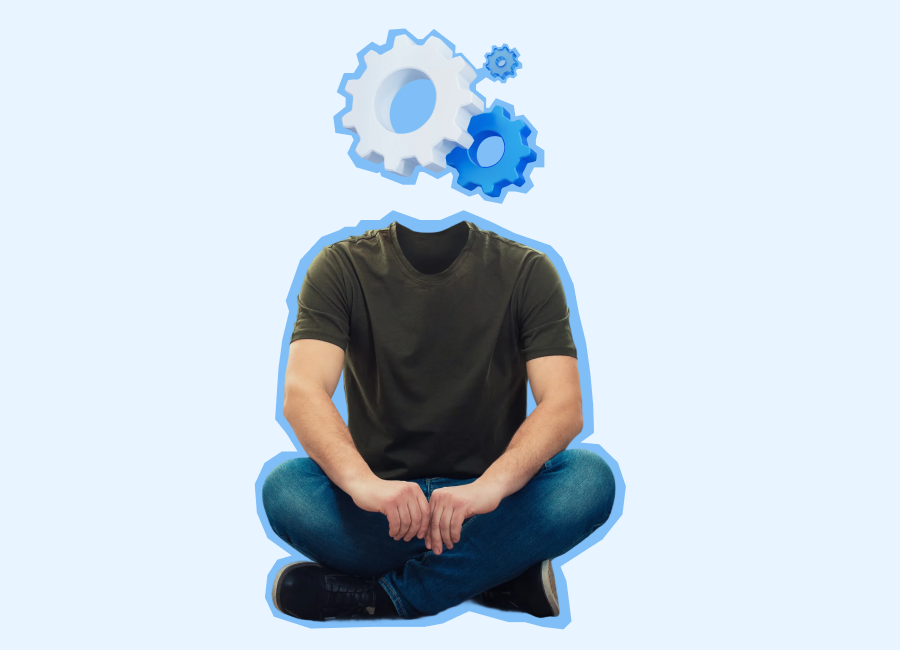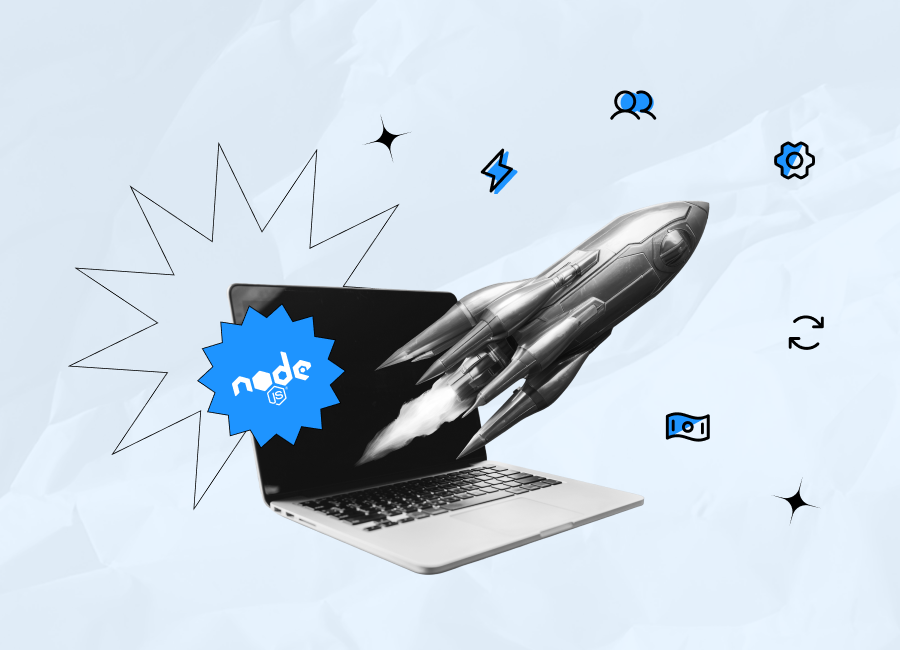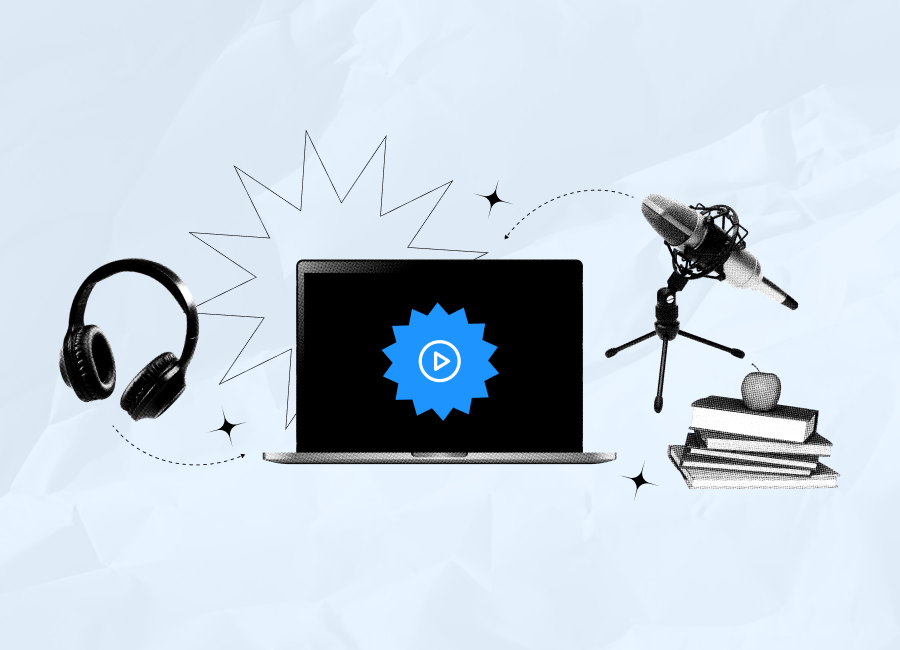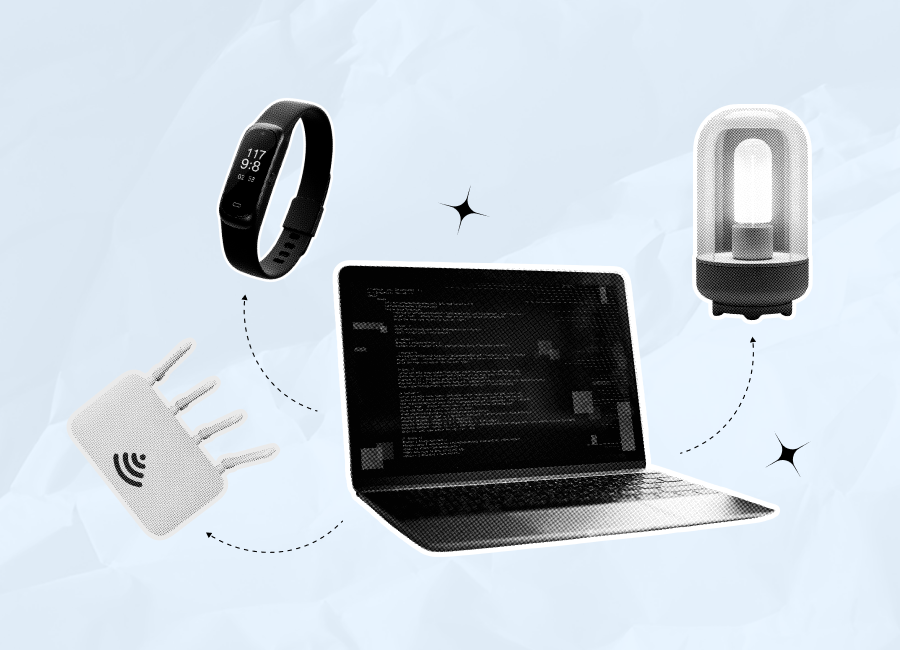Artificial intelligence has become one of the most promising technologies in the sports industry. Today, AI-powered solutions are transforming how athletes train, how coaches strategize, and how fans interact with the games they love. With the advancements in this field and the growing row of benefits that such tools offer, the interest in AI development services among sports organizations is continuously increasing.
At Cogniteq, we have extensive expertise in building custom sports software. Over the years of our work, we have been consistently keeping track of trends in this field and fully recognize the value of AI for the sports sector.
In this article, we are going to explain the role of AI in sports and demonstrate real-life applications for this technology within the industry.
What is AI in sports? Market Overview 2025
Artificial intelligence in sports is a term used to describe the application of machine learning, computer vision, natural language processing, data analytics, and other related technologies within the industry.
The key objectives of the introduction of AI solutions in sports are performance enhancement, strategic planning, and improvement of fan engagement.
In 2025, AI can be embedded in nearly every level of the game. Some youth academies have already started using AI-powered training apps. At the same time, elite professional teams rely on predictive analytics for injury prevention and tactical decision-making.
In 2024, the world’s AI in sports market achieved the level of $1.03 billion. By 2030, it is expected to hit $2.61 billion, which reflects a CAGR of over 16% for the period from 2024 to 2030.
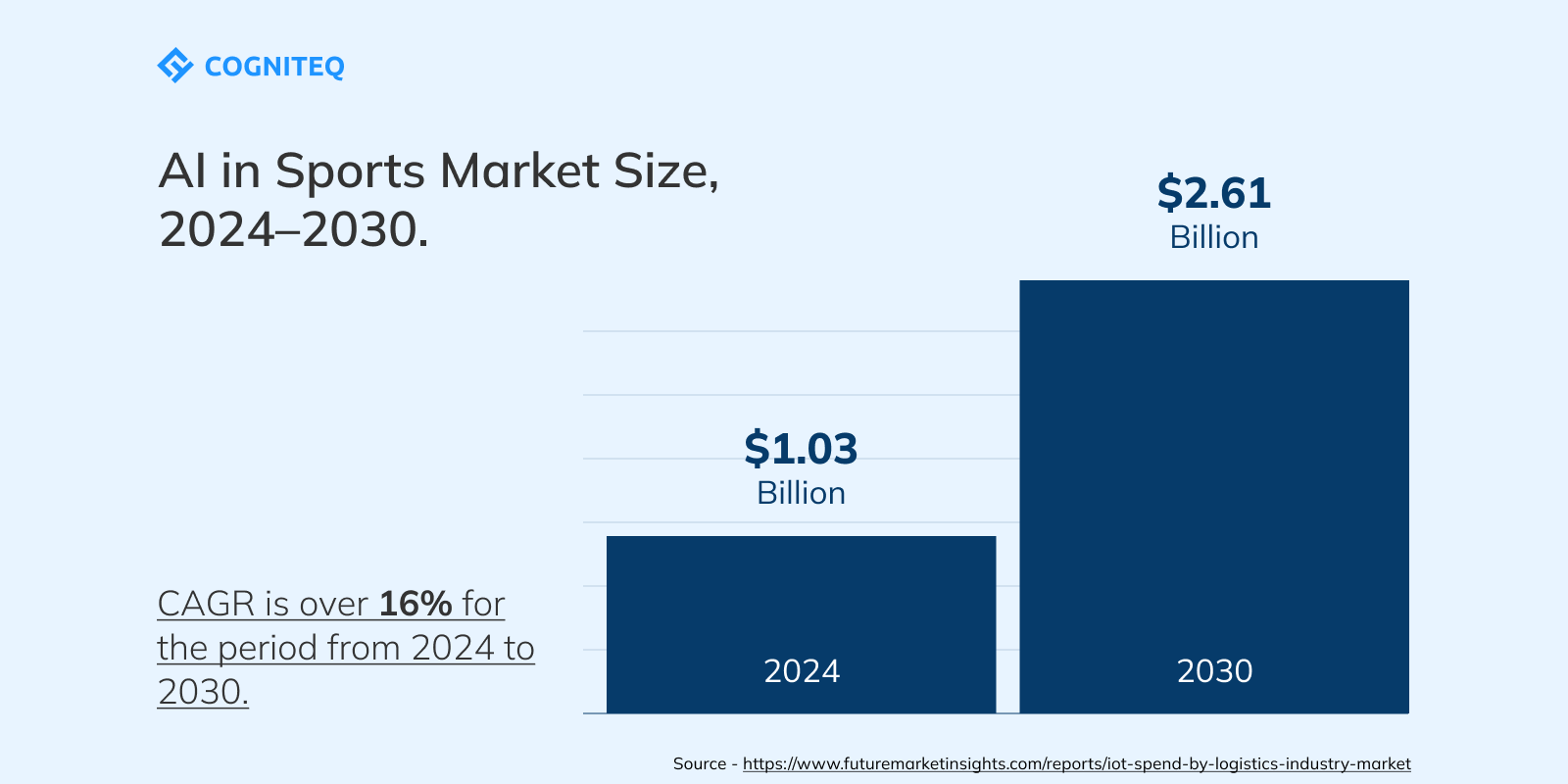
The market growth is fueled by a range of factors, including:
- Growth in the volume of available data in sports. Today, it’s possible to track many types of performance and biometric data during competitions and training sessions.
- Demand for a competitive edge. Teams are trying to gain an advantage in strategy and player development. That’s why they are interested in using solutions that can help them achieve their goals.
- Need for new fan engagement opportunities. AI-powered personalization and immersive media experiences can redefine the way fans watch matches, get information about sports games, and interact with teams.
- Commercial applications. The use of AI allows brands and sports organizations to introduce smarter sponsorship targeting, merchandise sales, and ticketing strategies to increase their revenue.
By 2025, leading sports organizations like LaLiga (Spanish Football League), Bundesliga, Red Bull Racing (Formula 1), Major League Baseball, and many others are already exploring the power of AI.
For instance, LaLiga has partnered with Microsoft to integrate AI into its operations, including match analysis, predictive analytics, and media production enhancements. Bundesliga is working with AWS to leverage AI for driving fan engagement and providing advanced data services.
Red Bull Racing, in partnership with Oracle, uses Oracle Cloud Infrastructure and generative AI for race strategy simulations, powertrain development, and real-time regulatory analysis.
Meanwhile, Major League Baseball’s Statcast system has transformed baseball analytics. It relies on cameras and radars to track biomechanics, including pitch speed and player positioning.
Now, let’s take a closer look at some of the most common use cases of AI in athletics.
AI-powered performance analytics
AI-driven analytics tools are designed to transform raw data into actionable insights and provide coaches and athletes with a better understanding of the progress and weak points. AI can process huge volumes of data received from multiple sources in real time and offer a holistic view of performance.
Here’s how such solutions are applied:
- Biomechanical analysis. AI can track body posture, joint angles, and movement efficiency and prepare detailed reports. Based on this, athletes can improve their techniques to make their performance safer and more efficient.
- Load management. Tools powered by machine learning in sports can also be used to monitor training intensity and detect trends that can be clear signs of fatigue or injuries. Such solutions can help athletes prevent overtraining and optimize peak performance periods.
- Skill development simulations. AI-powered VR environments enable athletes to practice plays and decision-making in realistic scenarios without injury risks.
- AI for athlete performance tracking. AI tools can detect trends observed over weeks, months, or seasons to help identify gradual improvements or hidden declines.
Health monitoring and injury predictions
The introduction of AI is the beginning of a big revolution in athlete health management. AI-driven tools can predict risks and potential injuries before they happen. Apart from that, they can suggest faster recovery strategies. Thanks to wearable devices, athletes can be monitored 24/7, before, during, and after training sessions and competitions.
Key features of health monitoring tools powered by AI in athletics:
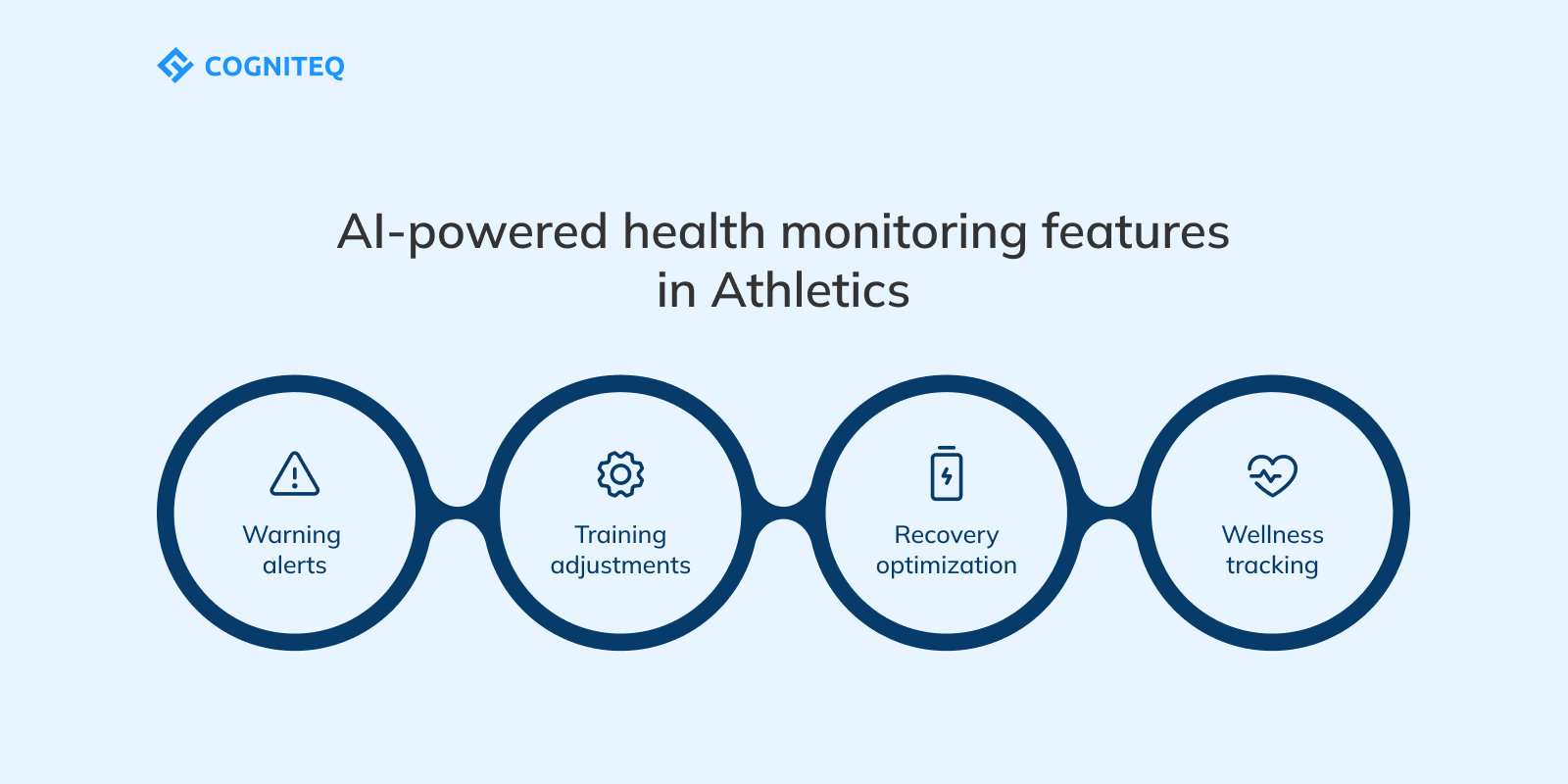
- Warning alerts. AI can detect muscle strain, dangerous heart rate variability, or any other signs that may indicate an upcoming injury. In that case, it will immediately send an alert to a coach and/or an athlete.
- Training adjustments. Such solutions can suggest modifications to workload, technique, and rest schedules based on real-time health data.
- Recovery optimization. AI-powered systems can recommend specific physiotherapy exercises and recovery plans tailored to an athlete’s injury profile.
- Wellness tracking. Apart from tracking physical parameters during training, AI can also monitor sleep quality, hydration, and nutrition. This analysis helps maintain peak physical condition.
AI in sports training, coaching decisions, and game strategy
AI provides coaches and teams with real-time insights that can significantly strengthen human judgment. Instead of analyzing data from various sources manually, coaches can turn to tech solutions and get valuable information practically instantly. Moreover, the use of sports data analytics helps them avoid a lot of mistakes and inaccuracies caused by human factors.
How such solutions can help:
- Real-time adjustments of tactics. AI can process match data, including player positions, heat maps, and possession trends, in real time. Based on the results of this immediate analysis, it can suggest strategy changes.
- Opponent analysis. Artificial intelligence can be applied to study historical data on rival teams. Having such insights at their disposal, coaches can anticipate tactics, strengths, and weaknesses of other teams to eliminate the risks of unexpected situations on the field.
- Scenario simulations. AI can run thousands of game simulations. This helps coaches prepare their teams for different match conditions or outcomes.
- Substitution optimization. AI can recommend the best player swaps based on their physical parameters, performance metrics, and opponent team composition.
AI in fan engagement
AI transforms fan experience from one-size-fits-all options to highly personalized engagement. Instead of simply watching a game, fans can become active participants in a digital ecosystem. AI algorithms can analyze data from streaming habits, ticket purchases, and social media interactions to create unique fan journeys.
How the use of AI boosts fan engagement:
- Content customization. AI can identify posts, articles, and live stats that are likely to be the most interesting to each fan, based on their favorite teams or players.
- AI chatbots and virtual assistants. Such apps can provide real-time match updates, as well as help with ticket booking or merchandise purchasing. Unlike human support teams on apps and websites, chatbots are available 24/7 and can handle multiple inquiries simultaneously.
- Interactive predictions. Fans can rely on AI insights to make match predictions and compete in gamified challenges.
AI in sports broadcasting
Sports broadcasting is evolving from a passive, one-way viewing experience into a data-rich form of storytelling. Viewers can receive real-time insights, predictive analytics, and personalized content streams, which deepen their understanding and connection to the game.
How AI enhanced sports broadcasting:
- Automated highlight generation. Artificial intelligence can detect and summarize key moments for social media and live apps. Generative AI can create such updates practically instantly, which is a huge advantage in comparison to manual report writing.
- Smart camera tracking. Computer vision can automatically follow the ball, key players, or pivotal action without human operators.
- Dynamic graphics and data overlays. AI can add real-time stats, player speed, shot trajectory, and tactical maps on video during live broadcasts.
- Voice and text commentary. AI can be used to generate commentary in multiple languages to expand global reach.
Want to launch your own AI-powered solution for teams or fans?
At Cogniteq, we have solid expertise in building advanced solutions for the sports industry and are always ready to assist you with your project.
Challenges of using AI in sports
The use of AI-powered systems in sports is a very forward-looking innovation that has a lot of benefits for all participants in the industry. Nevertheless, the implementation of AI tools is also related to a row of pitfalls. If you are preparing for the launch of your own solution of this type, you should be aware of them in advance.
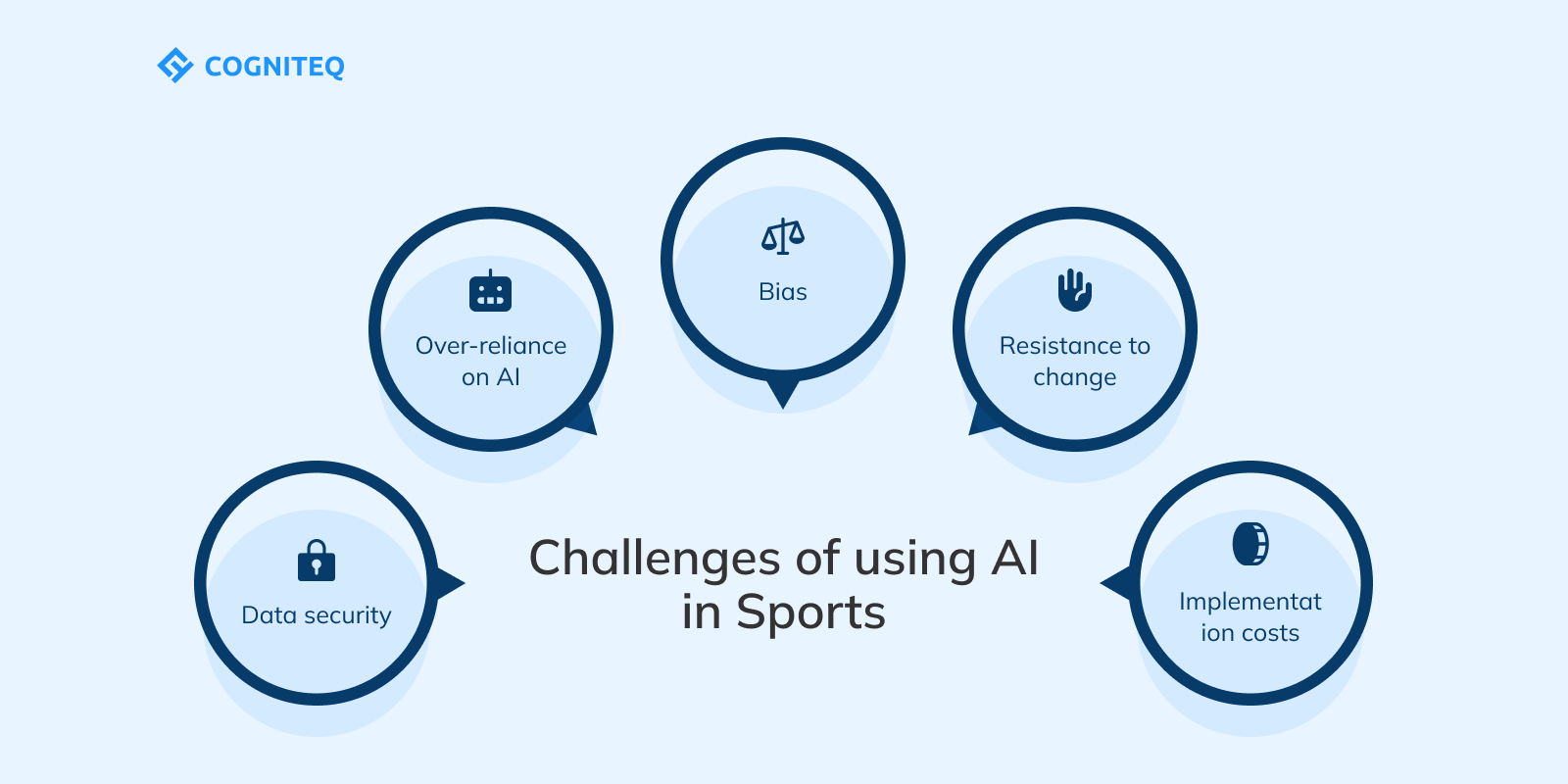
Data security
The use of AI in athletics relies on personal and performance data from athletes. The datasets can include sensitive health information. To maintain trust, it is vital to ensure secure storage and ethical use of this data.
Over-reliance on AI
Modern AI systems can provide valuable insights. But there is a risk that athletes and coaches could depend too heavily on AI systems, ignoring human intuition and creativity. It is essential to find the right balance between technology and human participation.
Bias
If the datasets used for AI model training contained biased or incomplete info, this may result in unfair or misleading outputs. Due to this, recommendations generated by AI could affect player recruitment and performance evaluations. To avoid this, it is necessary to use only high-quality datasets, regularly monitor the performance of AI models, update, and fine-tune them.
Resistance to change
Among coaches, athletes, and fans, there are a lot of those who value traditional approaches to training sessions and games. They may be skeptical of AI’s role. This may result in slowing adoption and cultural divides within the sports community.
Implementation costs
The introduction of advanced AI systems, sensors, and analytics tools requires significant investment. This can become a serious entry barrier for smaller sports clubs and schools and create a greater division between teams with limited budgets and wealthier organizations that can afford cutting-edge technology.
The future of AI in sports
Given all the benefits of artificial intelligence and machine learning in sports, it will be reasonable to assume that their implementation within the industry will continue. Here are some advancements that are expected to get mass adoption in the near future.
AI wearables for athletes for hyper-personalized training
Advanced wearable devices will combine biometric sensors with AI algorithms. This will allow them to deliver real-time performance adjustments. Athletes will be able to get instant feedback on posture, fatigue, or hydration levels during training and competition.
Integration with AR/VR tools for immersive experiences
AI solutions integrated with AR/VR will enable athletes to simulate high-pressure scenarios for mental conditioning for more efficient training. Meanwhile, the combination of these technologies will allow fans to experience games from a player’s perspective.
Computer vision for automated officiating
With AI-driven camera systems, referee decisions can become faster and more accurate. Such solutions will be able to increase fairness by instantly detecting fouls, offside, or ball placement.
Implementation of blockchain for secure sports data management
AI sports data analytics can be combined with blockchain’s transparent record-keeping. This will help ensure that player performance data and other sensitive information remain tamper-proof.
Robotics for training and rehabilitation
Smart training systems integrated with robotics training partners can help athletes recover faster and practice more effectively. For instance, they can assist in physiotherapy or simulate opponents’ playing styles so that athletes can be better prepared for real-life situations on the field.
Wrapping up
From being a complete innovation in sports, AI is gradually moving into the category of a golden standard. It brings a real transformation of how games are played and managed. Athletes have the opportunity to achieve new milestones without putting their health and safety at risk. Coaches get access to unique, real-time insights that redefine strategy. Meanwhile, fans can enjoy more interactive and personalized connections with their favorite sports and teams.
AI tools continue to evolve. And it is expected that their role in sports will only deepen as they will offer new chances for innovation and brighter experiences for athletes and fans.
If you already have an idea for an AI-powered product for the sports industry or you are just exploring possibilities in this field, our experts have the necessary skills and experience to help you. Contact us to start your AI journey.
FAQ
How is AI used in sports in 2025?
Today, AI-driven tools are applied across different use cases in sports. For example, such tools are implemented to enhance performance analytics, injury prediction, training optimization, and strategy development. They can also strengthen fan engagement by delivering tailored content and personalized experiences.
Can AI replace human coaches in the future?
At the moment, it’s too early to speak about the complete elimination of human participation from the training process. AI can deliver powerful insights, data analysis, and tactical recommendations. It is a great supportive tool, but it lacks the emotional intelligence and leadership skills that human coaches have.
What sports are using AI the most in 2025?
In 2025, AI is being actively used in football, basketball, tennis, and Formula 1 for analytics and decision-making. Apart from this, esports also leverage AI for performance tracking and strategy optimization.
Is AI being used in sports broadcasting?
Yes, today, AI can also be used in sports broadcasting. The technology is helpful for automated report generation, real-time statistics, and personalized viewing experiences. Additionally, AI-powered solutions are applied for camera tracking and commentary enhancements.
Are there any downsides to using AI in sports?
Yes, there are some pitfalls of using artificial intelligence in sports. Their range includes data privacy concerns and the risk of reducing the human element in sports. Moreover, there is also the challenge of making sure that AI systems remain unbiased and fair over time.
